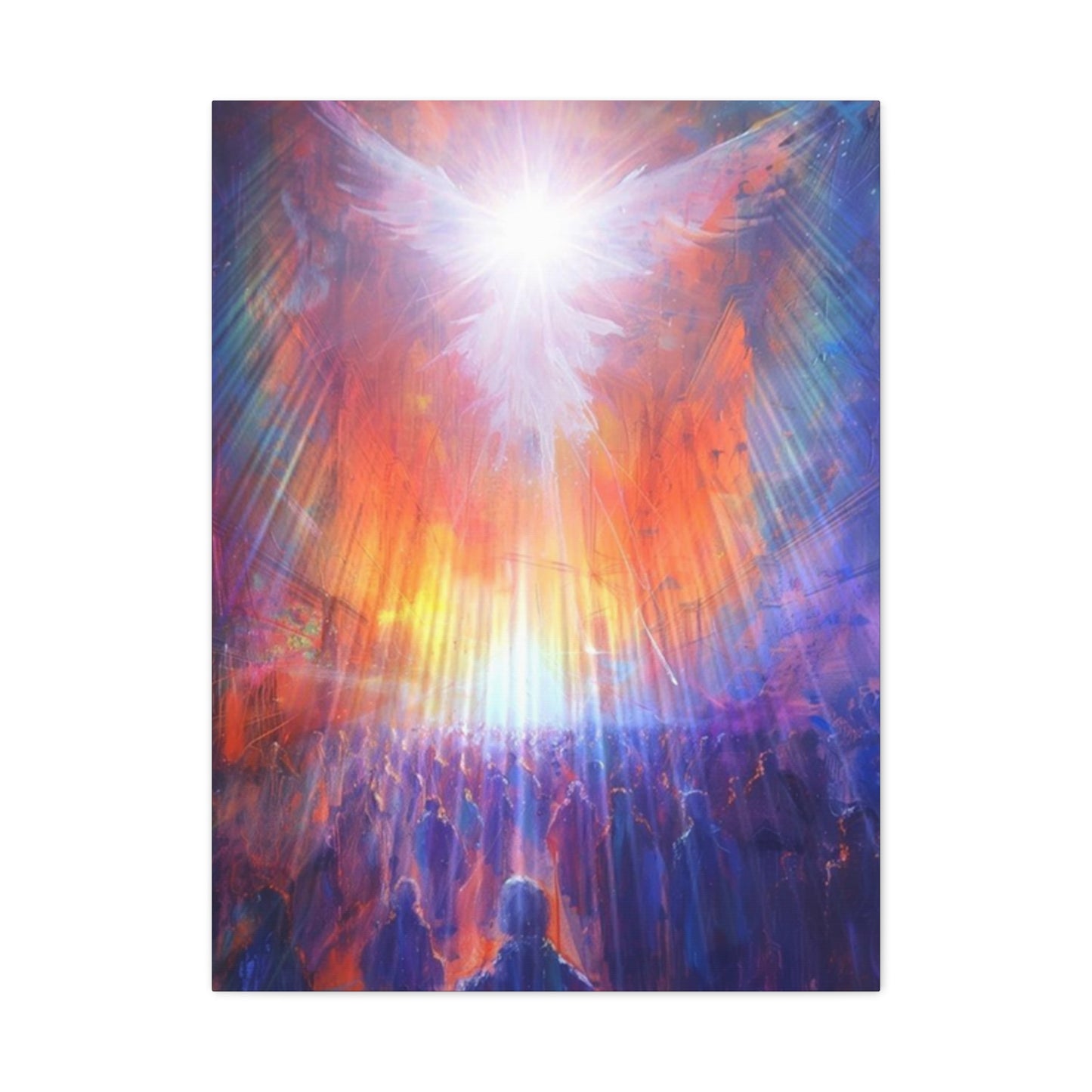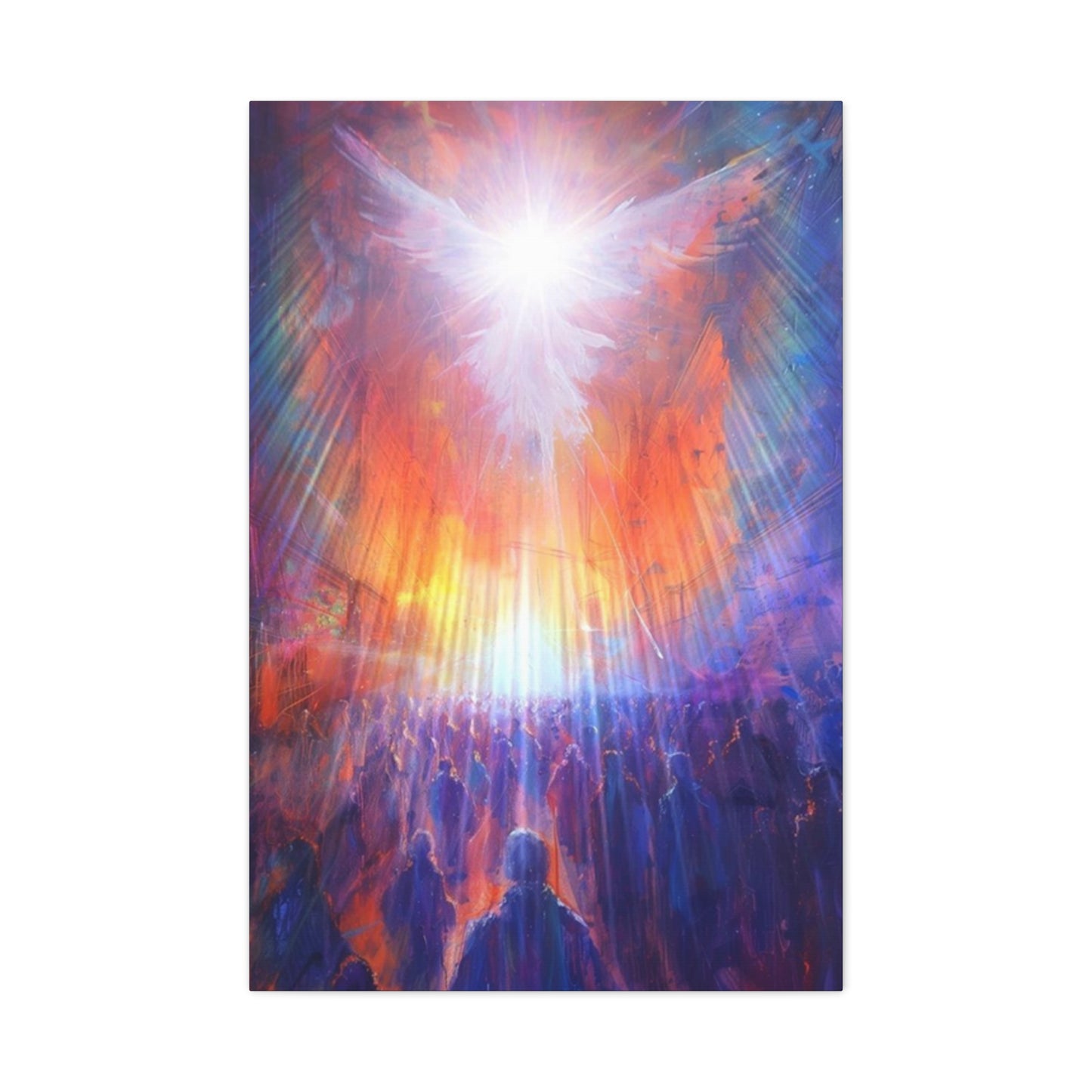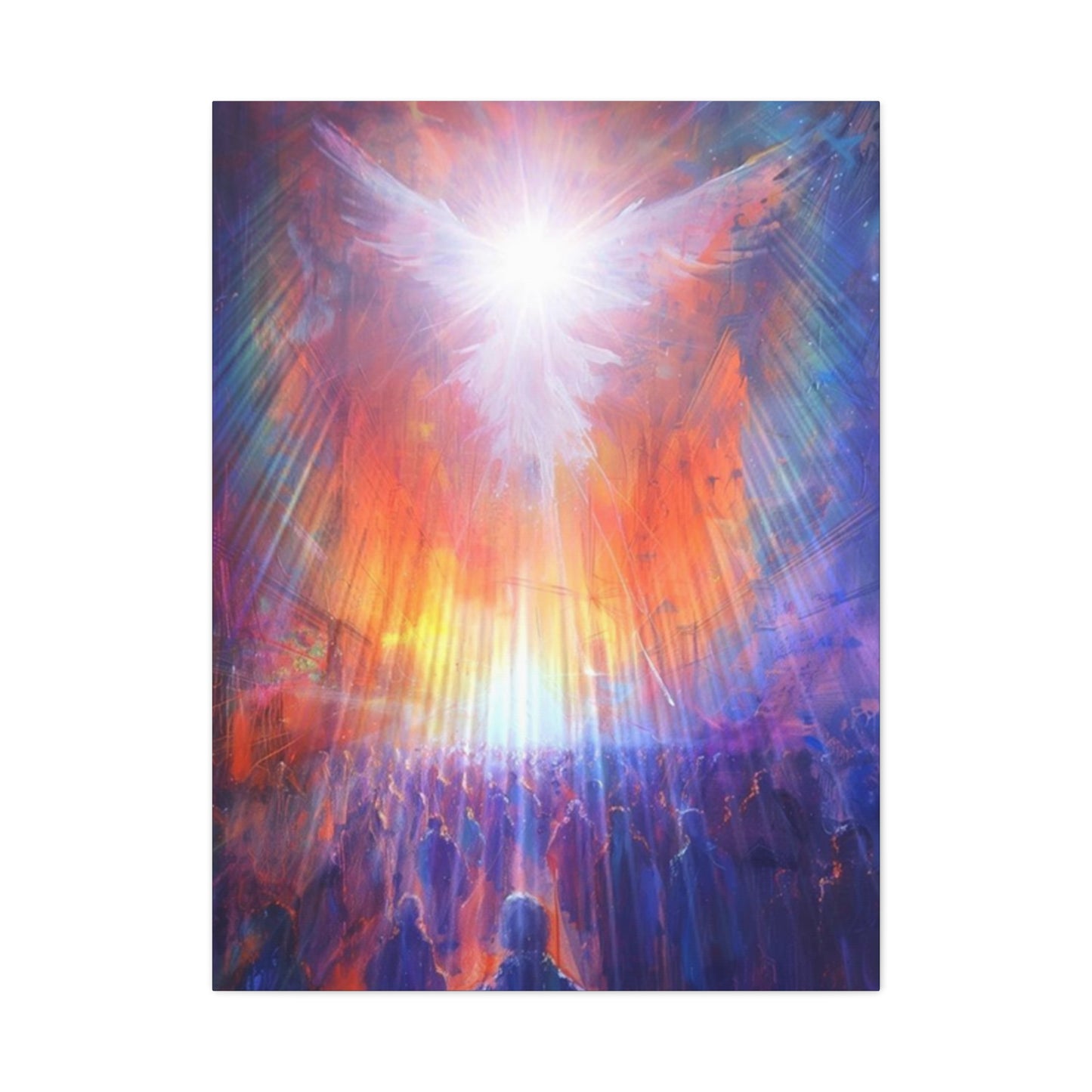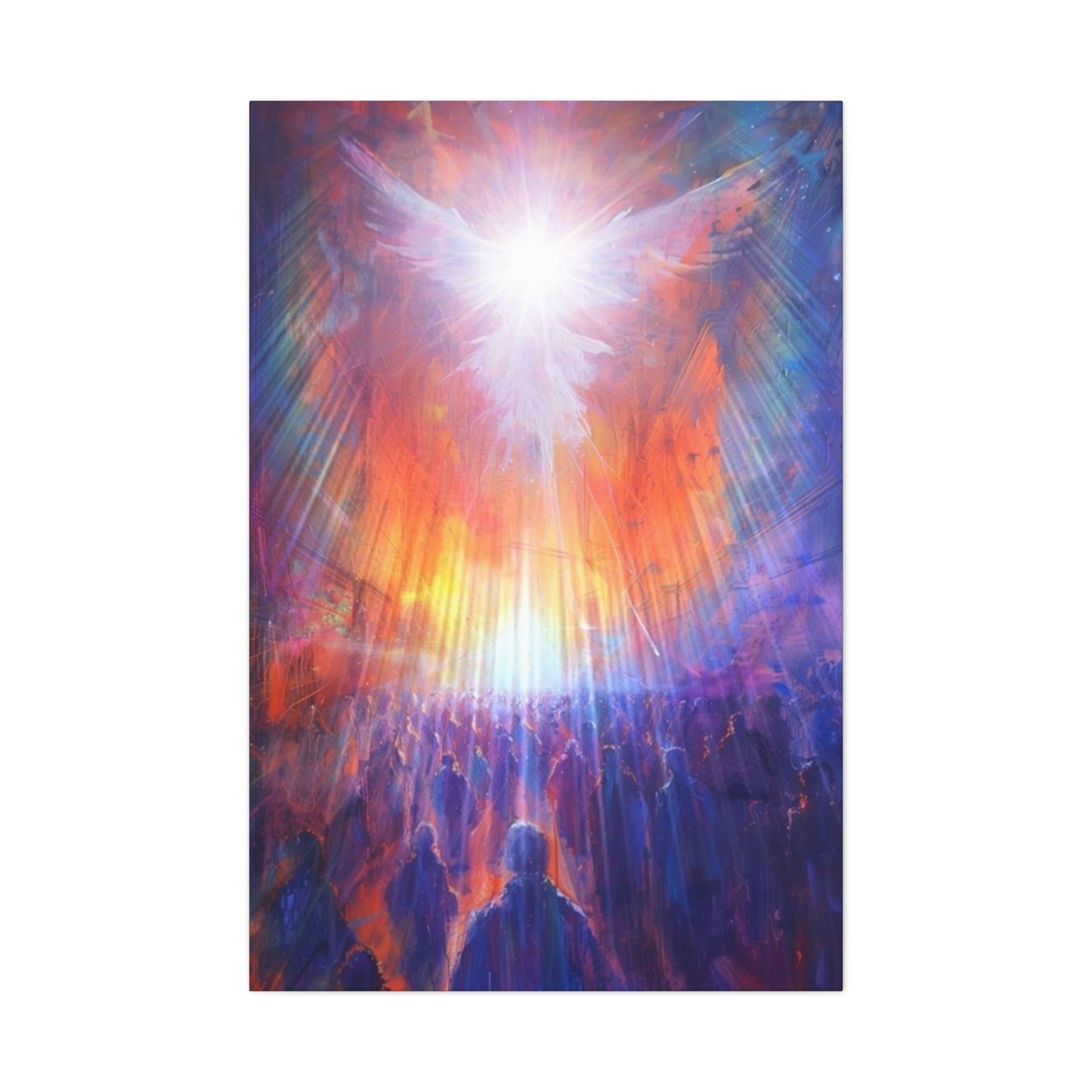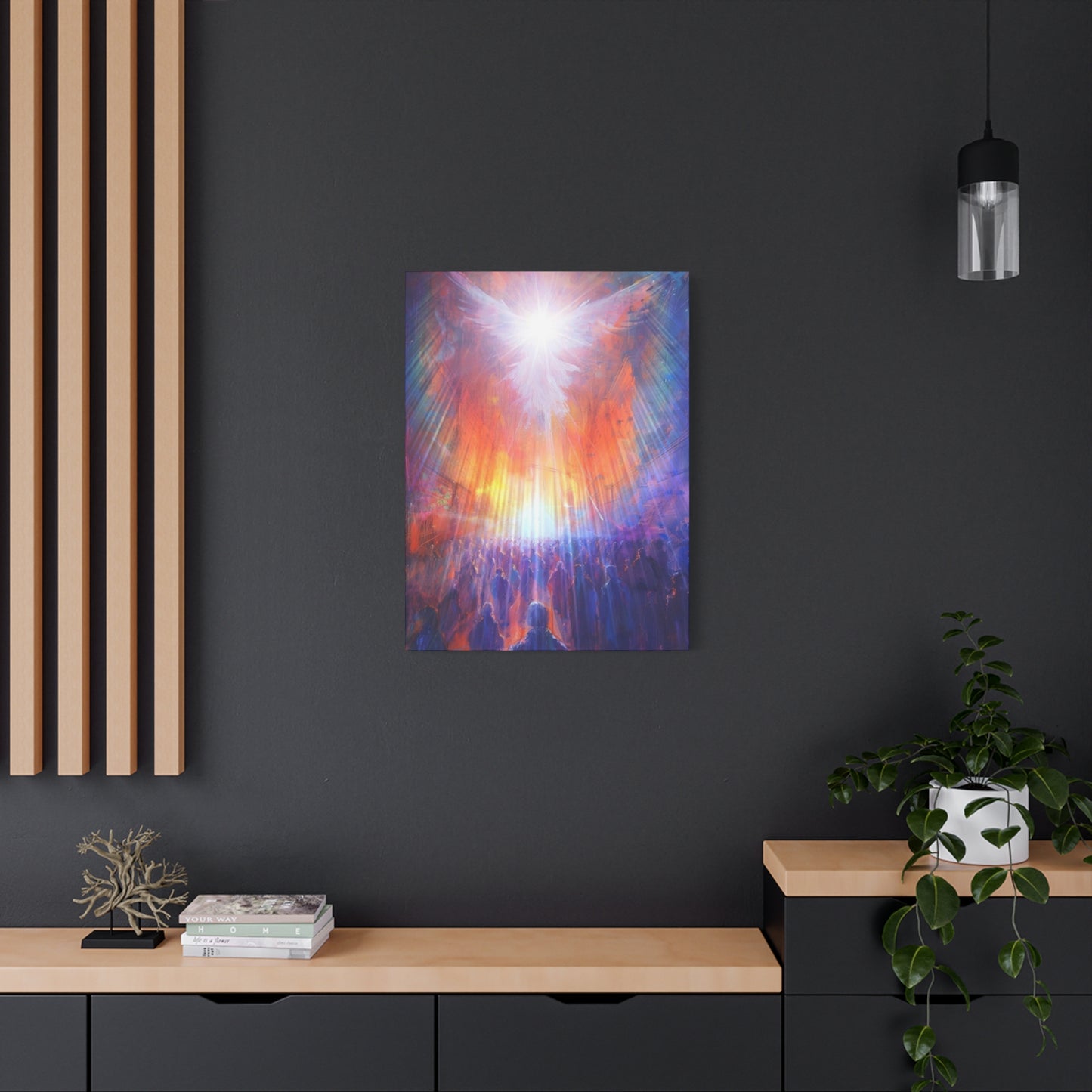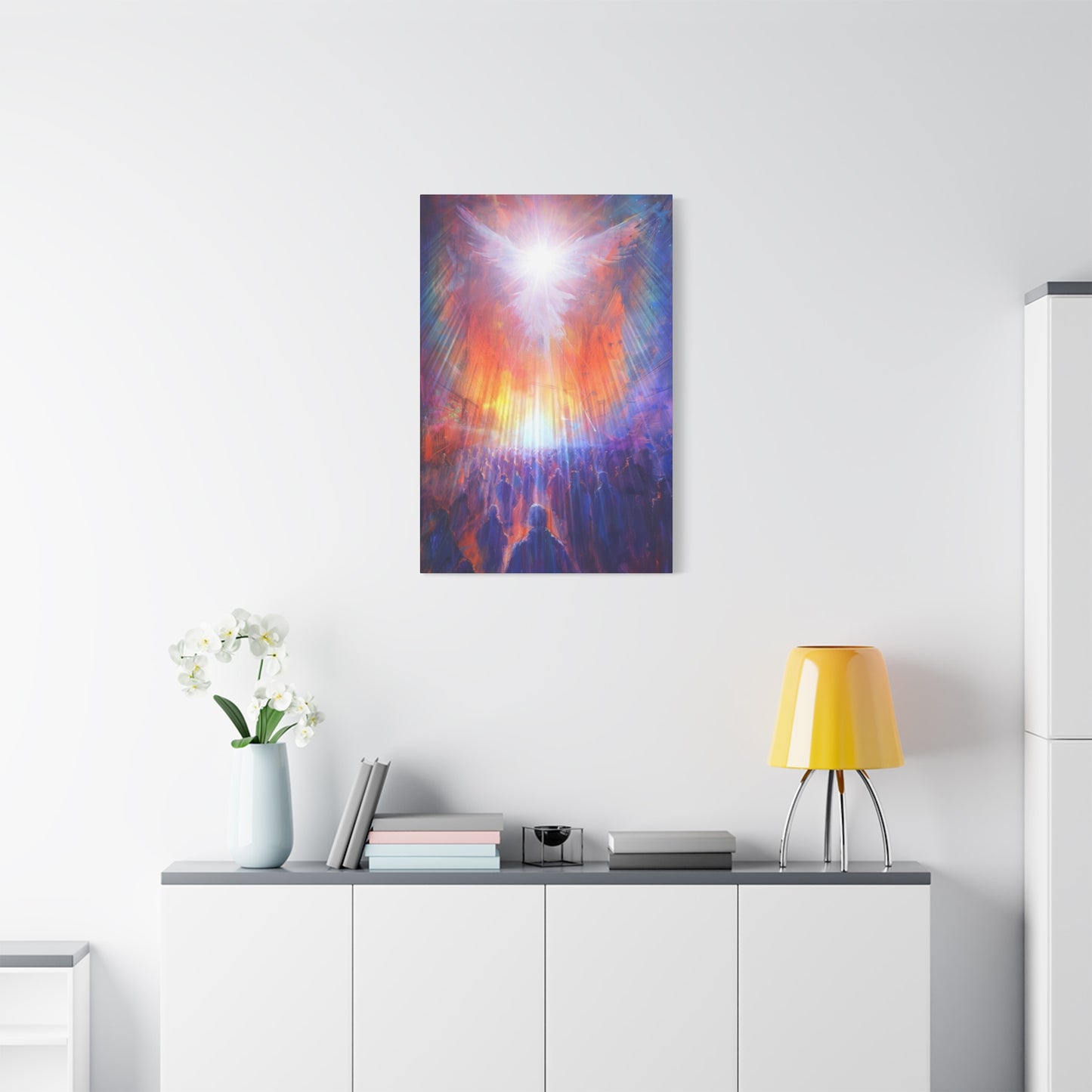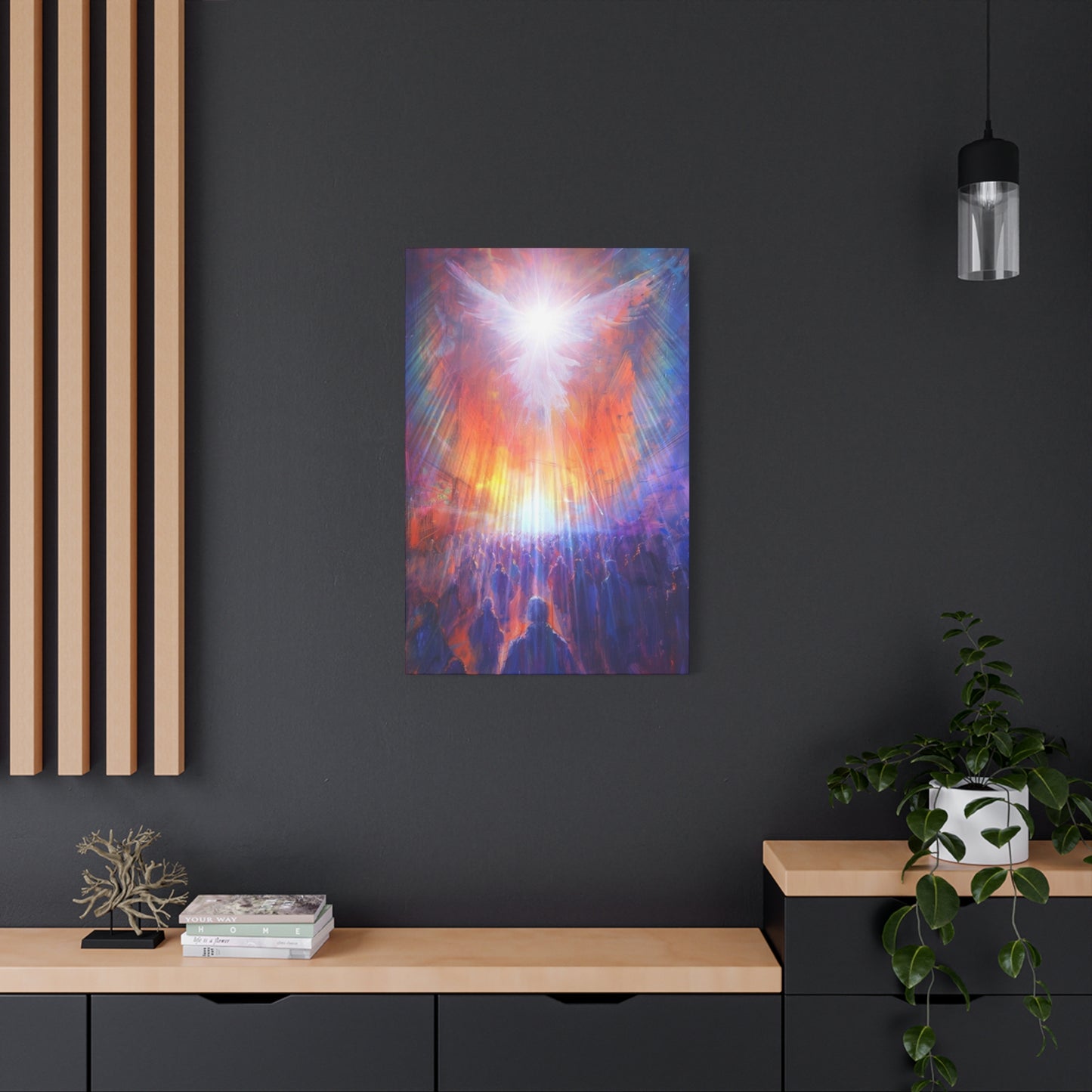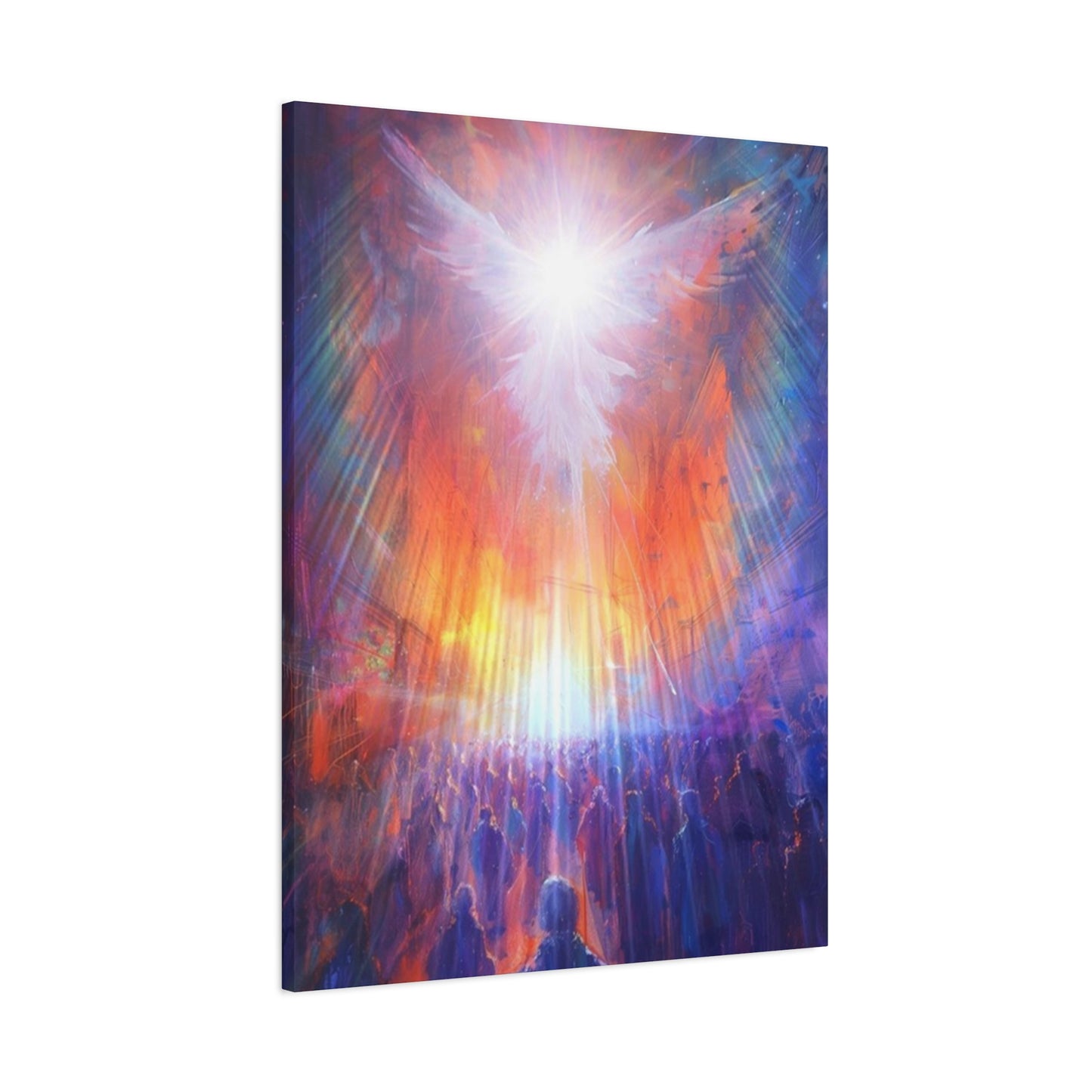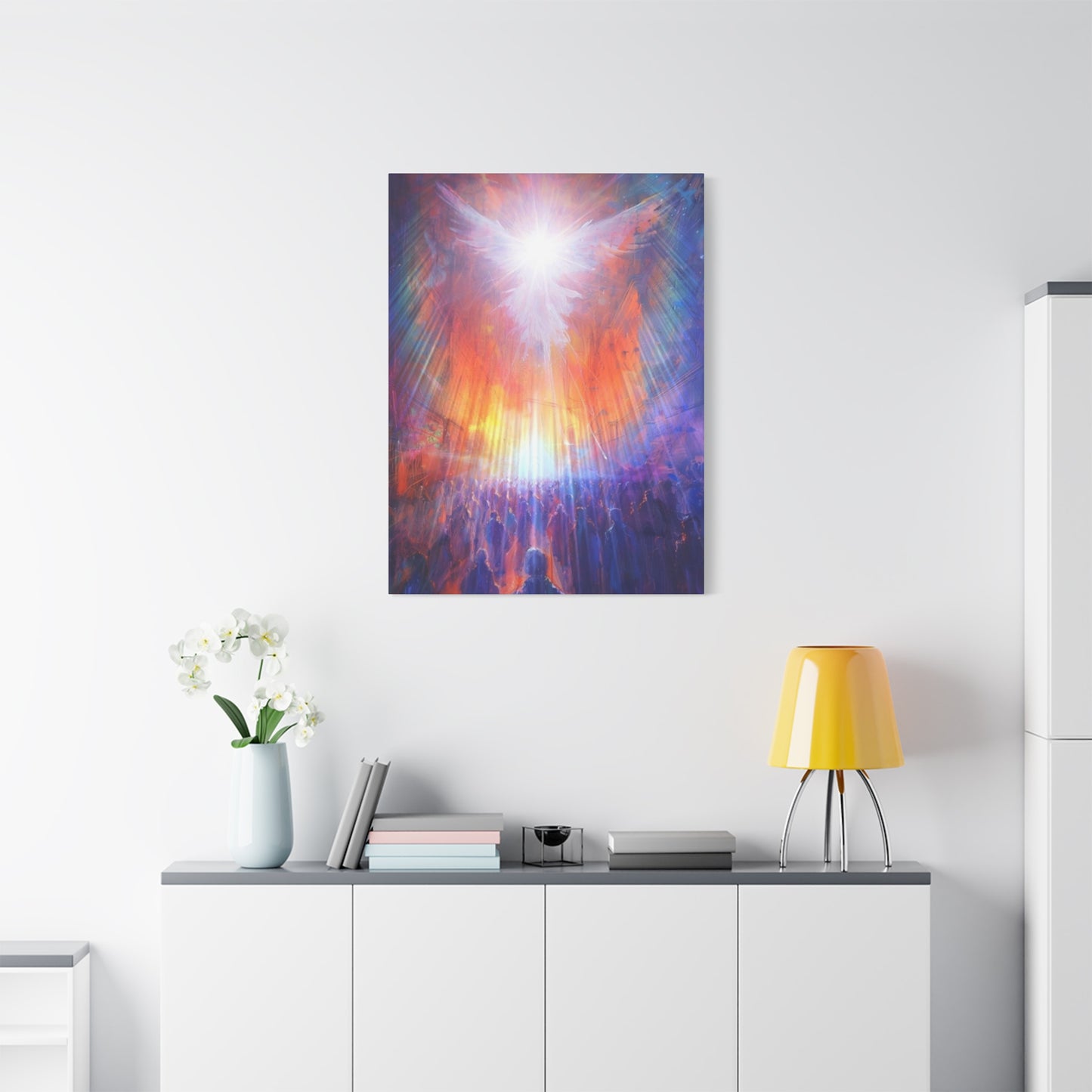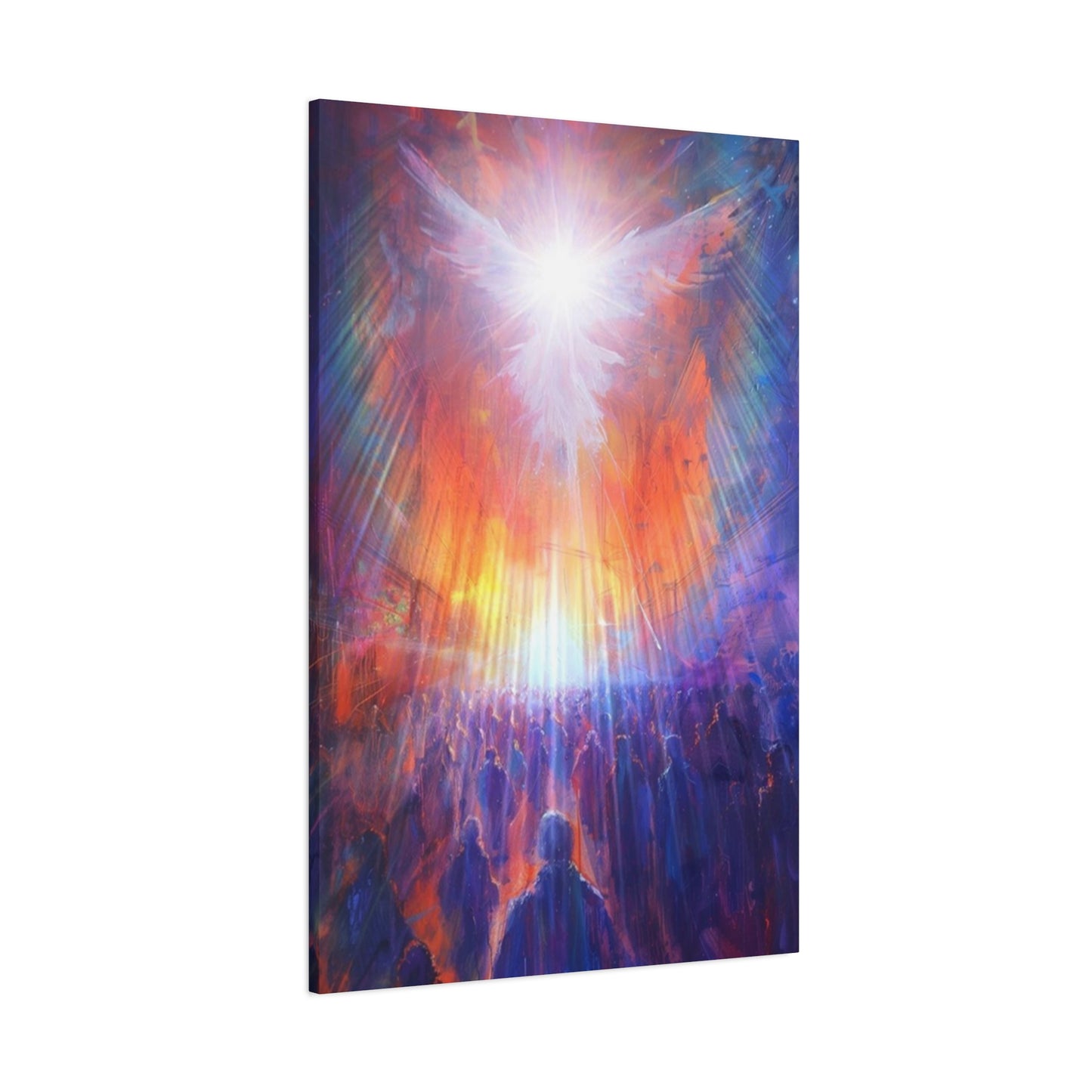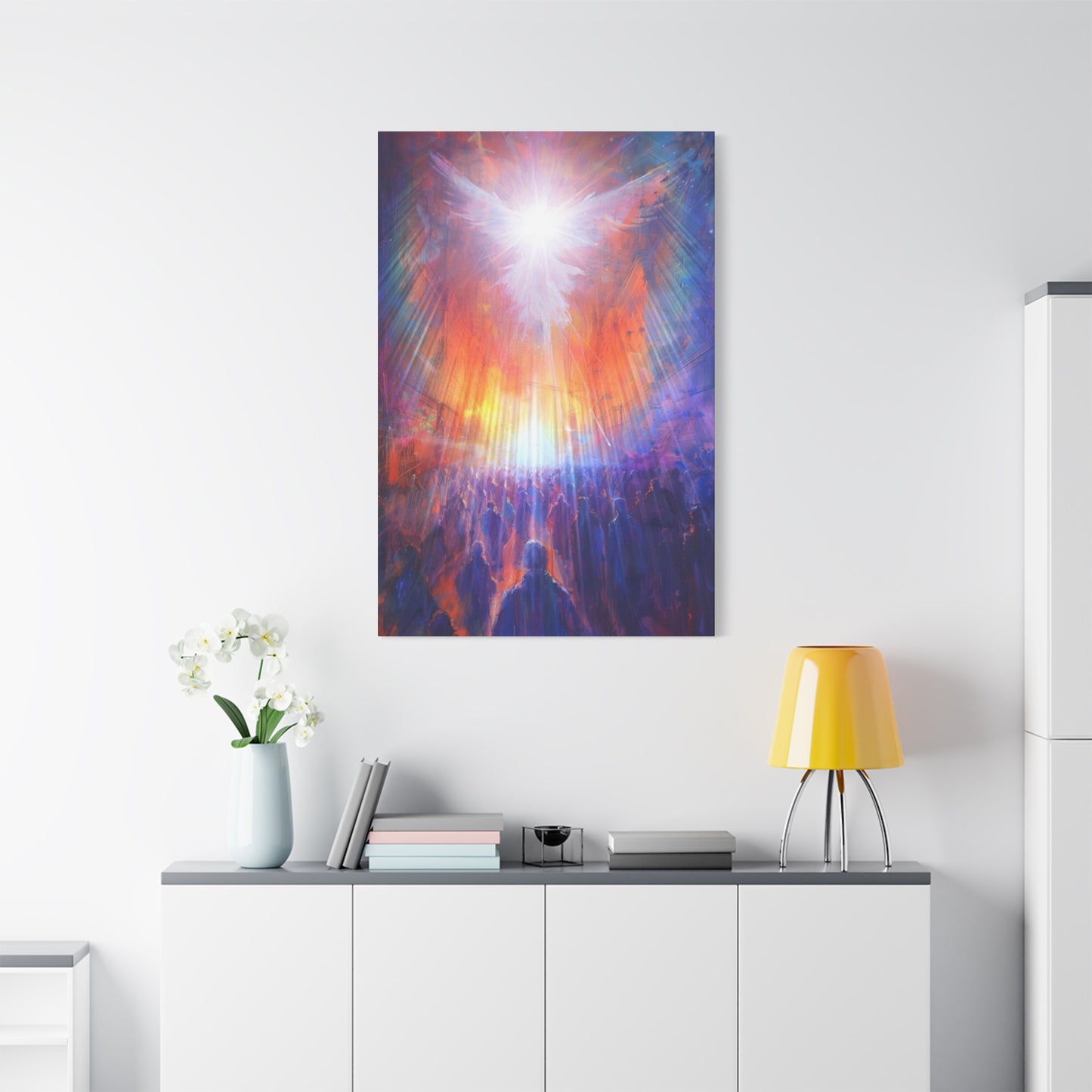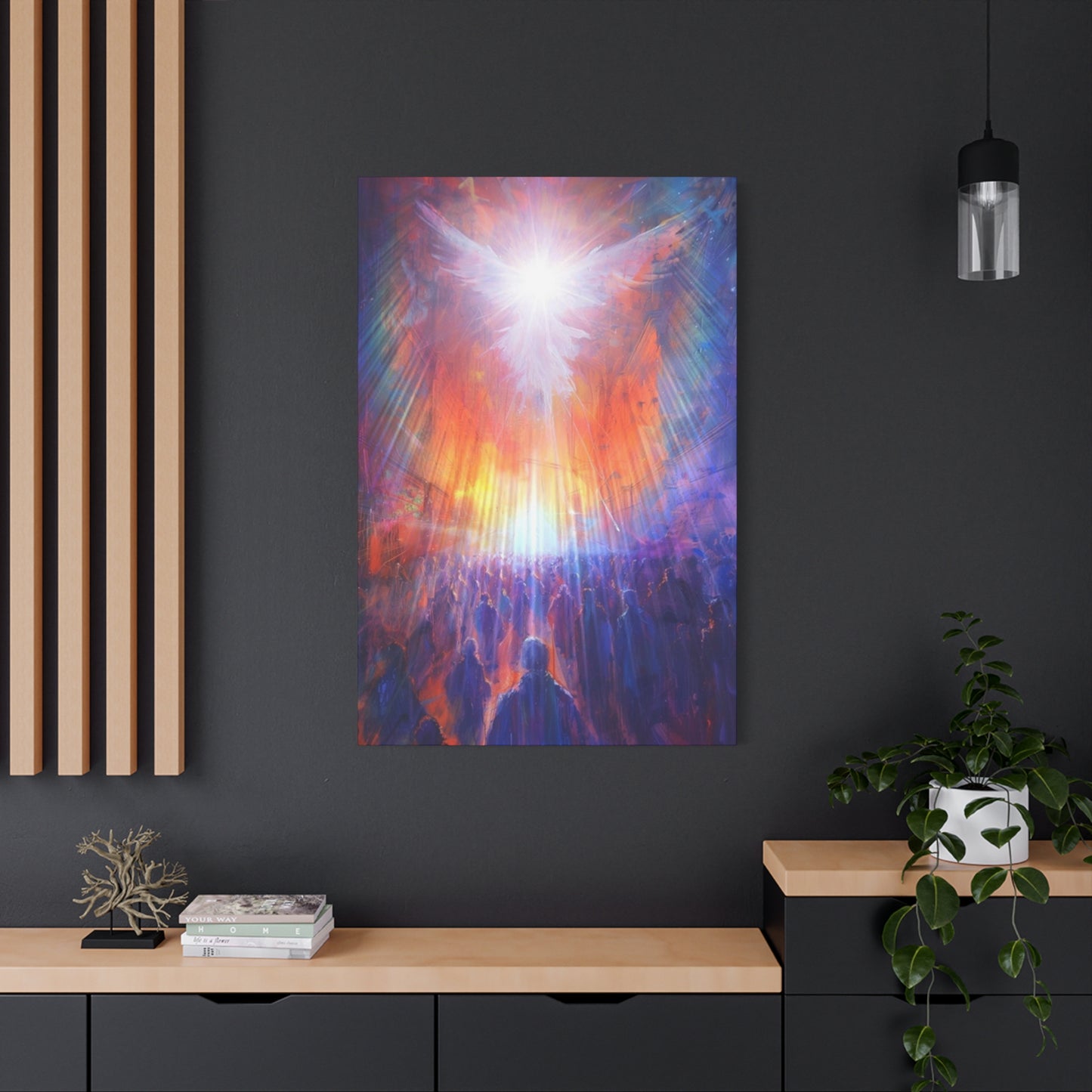Sacred Illumination: Colorful God Light Wall Art for Spiritual Enhancement
The profound connection between divine light and artistic expression has captivated human civilization for millennia. Sacred illumination through colorful god light wall art represents more than mere decoration; it embodies a spiritual journey that transforms ordinary living environments into sanctuaries of peace and reflection. This comprehensive exploration delves into the multifaceted world of luminous religious artwork, examining how vibrant colors and ethereal lighting effects create powerful visual representations of the divine.
Contemporary artists and spiritual practitioners increasingly recognize the transformative power of illuminated religious artwork. These pieces serve as conduits between the earthly realm and higher consciousness, utilizing sophisticated color palettes and innovative lighting techniques to evoke feelings of transcendence and spiritual awakening. The integration of modern technology with traditional religious iconography has opened new avenues for artistic expression, allowing creators to craft pieces that resonate with both ancient wisdom and contemporary aesthetics.
Premier Concepts for Vibrant Divine Illumination Artwork
The realm of vibrant divine illumination artwork encompasses numerous design philosophies and artistic approaches. Master craftsmen and contemporary artists alike have developed distinctive methodologies for creating pieces that capture the essence of sacred light through carefully orchestrated color schemes and illumination techniques.
Sacred geometry forms the foundation of many exceptional divine light artworks. These pieces incorporate mathematical principles that have been revered across cultures as representations of cosmic order and divine perfection. The golden ratio, fibonacci sequences, and mandala patterns frequently appear in high-quality religious illumination art, creating compositions that feel both harmonious and transcendent.
Stained glass effects represent another prominent category within vibrant divine artwork. These pieces emulate the magnificent cathedral windows that have inspired worshippers for centuries, translating the ethereal beauty of colored light filtration into contemporary formats. Modern interpretations often incorporate LED backlighting systems that create dynamic color transitions, mimicking the way natural sunlight transforms stained glass throughout different times of day.
Abstract representations of divine light have gained significant popularity among contemporary spiritual art enthusiasts. These pieces move beyond literal religious iconography to capture the emotional and spiritual essence of divine presence through pure color, form, and light. Gradient effects, aurora-like patterns, and celestial phenomena serve as inspiration for these more interpretative approaches to sacred artwork.
Nature-inspired divine light artwork draws inspiration from phenomena such as sunrises, rainbows, and the aurora borealis. These pieces recognize that many individuals experience the divine through natural beauty, translating these awe-inspiring moments into permanent artistic expressions. The interplay of warm and cool tones in these works often reflects the balance between earthly and celestial energies.
Cultural fusion approaches combine traditional religious symbols and motifs from various faith traditions with contemporary lighting and color techniques. These inclusive designs celebrate the universal aspects of spiritual experience while honoring the rich artistic traditions of different cultures. Sanskrit mantras illuminated with modern LED systems, Celtic crosses rendered in holographic materials, and Islamic geometric patterns enhanced with color-changing elements exemplify this approach.
Minimalist divine light art focuses on simplicity and clarity of expression. These pieces often feature clean lines, limited color palettes, and subtle lighting effects that create profound impact through restraint rather than complexity. The philosophy behind minimalist sacred art suggests that divine truth is often found in simplicity and that overcomplicated designs can distract from spiritual contemplation.
Interactive divine light artwork incorporates motion sensors, sound activation, or touch-responsive elements that allow viewers to engage directly with the piece. These installations recognize that spiritual experience is often participatory and that the act of interaction can deepen one's connection to the artwork and its spiritual message.
Seasonal variations in divine light artwork acknowledge the cyclical nature of spiritual life and the changing energies throughout the year. These pieces may feature different color schemes or lighting patterns that correspond to various liturgical seasons, lunar phases, or natural cycles, creating a dynamic spiritual focal point that evolves throughout the year.
Creative Self-Made Luminous Sacred Artwork Projects
The journey of creating personal luminous sacred artwork offers profound opportunities for spiritual exploration and artistic expression. Handcrafted divine light pieces carry unique energy because they emerge from personal meditation and creative intention, making them particularly meaningful for their creators and viewers.
Basic illuminated religious artwork can begin with simple materials and gradually evolve into more sophisticated installations. Translucent papers, LED strips, and basic crafting supplies provide excellent starting points for beginners. The key lies in approaching the creative process as a form of meditation, allowing spiritual inspiration to guide artistic choices rather than forcing predetermined outcomes.
Canvas painting with luminous elements represents an accessible entry point for many aspiring creators. Glow-in-the-dark paints, phosphorescent pigments, and UV-reactive materials can transform traditional religious paintings into dynamic light displays. These materials allow artwork to reveal different aspects during daylight and darkness, symbolizing the varying ways divine presence manifests in different circumstances.
Fiber optic installations offer fascinating possibilities for creating ethereal lighting effects. These systems can be woven through fabric backgrounds, embedded in wooden panels, or arranged in three-dimensional sculptures. The pinpoints of light created by fiber optic systems closely resemble starfields, making them particularly effective for representing celestial themes in religious art.
Layered transparency techniques involve creating multiple translucent layers that interact with backlighting to produce complex visual effects. Each layer might feature different religious symbols, color filters, or textural elements that combine to create rich, multidimensional compositions. This approach allows artists to build symbolic depth into their work, with different layers representing various aspects of spiritual experience.
Repurposed material projects demonstrate how ordinary objects can be transformed into sacred art through creative vision and spiritual intention. Old windows can become backlit meditation focal points, discarded bottles can be converted into colorful light fixtures with religious significance, and worn fabrics can be rejuvenated as luminous prayer banners.
Electronics integration allows modern creators to incorporate programmable lighting effects, sound activation, and interactive elements into their spiritual artwork. Arduino microcontrollers, LED strip controllers, and smartphone apps provide tools for creating sophisticated lighting sequences that can respond to prayer times, meditation sessions, or seasonal celebrations.
Collaborative creation projects bring communities together around shared spiritual and artistic goals. These endeavors might involve multiple families or congregation members contributing elements to a larger installation, fostering connection and shared purpose while creating something more magnificent than any individual could achieve alone.
Natural material incorporation emphasizes the connection between divine presence and the natural world. Driftwood, stones, shells, and dried flowers can be integrated with lighting elements to create pieces that honor both spiritual beliefs and environmental stewardship. These approaches often resonate strongly with individuals who experience the divine through nature.
Employing Luminosity and Chromatic Elements for Divine Representation
The strategic employment of luminosity and chromatic elements in divine representation requires deep consideration of color psychology, cultural symbolism, and spiritual significance. Artists working in this medium must balance aesthetic appeal with meaningful spiritual communication, creating pieces that are both visually striking and spiritually authentic.
Color temperature plays a crucial role in establishing the emotional and spiritual tone of divine light artwork. Warm colors such as gold, amber, and deep orange traditionally represent divine presence, comfort, and spiritual warmth. These hues evoke feelings of safety, love, and divine protection, making them ideal for meditation areas and prayer rooms where individuals seek comfort and guidance.
Cool colors including blue, violet, and white often represent transcendence, infinity, and divine wisdom. These cooler tones can create feelings of expansion and connection to higher consciousness, making them effective for contemplative practices that focus on spiritual growth and enlightenment. The interplay between warm and cool tones in a single piece can represent the balance between divine love and divine wisdom.
Chromatic transitions and gradients offer powerful methods for representing spiritual transformation and divine movement. Subtle color shifts from earthly browns and greens to celestial blues and purples can symbolize the soul's journey from material concerns to spiritual awakening. These transitions work particularly well in larger installations where viewers can experience the color journey as they move through the environment.
Symbolic color associations vary significantly across different religious and spiritual traditions, requiring careful consideration when creating inclusive divine light artwork. While Western Christian traditions often associate white with purity and gold with divinity, Eastern traditions might emphasize different color relationships. Hindu traditions recognize specific colors for different deities, while Buddhist practices often focus on rainbow spectrums representing various aspects of enlightenment.
Layered lighting systems allow artists to create complex color interactions that change throughout different viewing periods. Multiple light sources with different color temperatures and intensities can be programmed to create evolving compositions that never appear exactly the same twice. This approach reflects the dynamic nature of spiritual experience and prevents the artwork from becoming static or overly familiar.
Reflective and refractive elements multiply and transform light in ways that can create seemingly infinite depth and complexity. Mirrors, crystals, prisms, and metallic surfaces interact with colored light to produce effects that extend beyond the physical boundaries of the artwork itself. These elements can make small pieces appear much larger and create the impression that divine light extends throughout the entire environment.
Contrast and harmony balance represents a fundamental principle in effective divine light artwork. High contrast between light and shadow can create dramatic effects that emphasize the power and mystery of divine presence, while harmonious color relationships promote feelings of peace and unity. Masterful artists learn to employ both approaches strategically within single compositions.
Temporal color changes acknowledge that spiritual experience evolves throughout different times and seasons. Programmable lighting systems can gradually shift color palettes to reflect daily prayer cycles, liturgical seasons, or personal spiritual practices. These changes keep the artwork fresh and relevant while acknowledging the dynamic nature of spiritual life.
Purchasing Locations for Vibrant Divine Illumination Pieces
The marketplace for vibrant divine illumination pieces has expanded dramatically with the growth of both online platforms and specialized spiritual retail establishments. Discerning collectors and spiritual practitioners now have access to an unprecedented variety of high-quality luminous religious artwork from artists around the world.
Specialized spiritual art galleries offer curated selections of divine light artwork created by established and emerging artists. These venues typically provide detailed information about the artists' spiritual backgrounds and creative processes, helping buyers understand the intention and meaning behind each piece. Gallery staff often possess deep knowledge about the spiritual significance of different artistic approaches and can provide valuable guidance for selecting pieces that align with specific spiritual practices or beliefs.
Online artisan marketplaces have democratized access to unique handcrafted divine light artwork. Platforms dedicated to handmade goods feature countless creators who specialize in spiritual art, offering everything from simple illuminated prayer cards to elaborate interactive installations. These venues often allow direct communication between buyers and artists, facilitating custom commissions and personalized spiritual artwork.
Religious bookstores and gift shops increasingly stock contemporary divine light artwork alongside traditional religious items. These establishments understand their customers' spiritual needs and often carry pieces specifically selected for their devotional and meditative qualities. The advantage of purchasing from these venues lies in their understanding of how the artwork will be used in spiritual practice.
Art and craft fairs provide opportunities to meet artists personally and see divine light artwork in person before purchasing. These events often feature live demonstrations of creation techniques and allow potential buyers to discuss the spiritual significance of different pieces directly with their creators. The personal connection formed at these events can add meaningful depth to the artwork's role in one's spiritual practice.
Contemporary furniture and home decor retailers have begun incorporating spiritual and divine light artwork into their collections as consumers increasingly seek meaningful decorative elements. These venues often focus on pieces that blend seamlessly with modern home aesthetics while maintaining their spiritual significance.
Commission opportunities with individual artists allow for the creation of completely personalized divine light artwork tailored to specific spiritual needs and environmental requirements. Working directly with artists provides the opportunity to incorporate personal symbols, favorite prayers or mantras, and specific color preferences into custom pieces.
International import and specialty shops often carry unique divine light artwork representing various global spiritual traditions. These establishments can provide access to traditional techniques and cultural approaches that might not be available through domestic sources, offering opportunities to explore different cultural expressions of divine light.
Online auction platforms and estate sales occasionally feature vintage and antique divine light artwork, including historical pieces that demonstrate the evolution of luminous religious art over time. These sources can provide access to rare and unique pieces with established provenance and historical significance.
Direct purchase from monasteries, convents, and spiritual communities offers opportunities to acquire artwork created in contemplative environments by individuals dedicated to spiritual life. These pieces often carry particularly strong spiritual energy because they emerge from communities focused entirely on devotional practice.
Integrating Sacred Themes within Vibrant Artistic Expressions
The integration of sacred themes within vibrant artistic expressions requires careful balance between spiritual authenticity and aesthetic innovation. Contemporary artists working in this field must navigate the intersection of traditional religious symbolism with modern artistic techniques, creating pieces that honor spiritual traditions while speaking to contemporary sensibilities.
Universal spiritual symbols provide common ground for artists seeking to create inclusive divine light artwork. Elements such as light itself, sacred geometry, flowing water, ascending spirals, and celestial bodies appear across virtually all spiritual traditions, making them ideal foundations for artwork intended to speak to diverse audiences. These symbols carry deep meaning while remaining accessible to individuals from various faith backgrounds.
Scripture and sacred text integration allows artists to incorporate the actual words of spiritual teachings into their luminous artwork. Illuminated calligraphy, scrolling text displays, and layered word compositions can make sacred writings a central visual element while adding the transformative power of divine light. Different languages and scripts can be layered to acknowledge the global nature of spiritual seeking.
Archetypal imagery draws upon the universal spiritual symbols identified by depth psychology and comparative religion. Angels, ascending figures, lotus flowers, trees of life, and mandalas represent archetypal patterns that resonate across cultural boundaries. When enhanced with appropriate lighting and color, these images can evoke profound spiritual responses regardless of viewers' specific religious backgrounds.
Nature-based spirituality themes recognize the divine presence manifest in the natural world. Artistic representations of sunrises, flowing rivers, mountain peaks, and forest scenes can be enhanced with lighting effects that emphasize their spiritual significance. These approaches particularly appeal to individuals who experience the divine through environmental connection and ecological awareness.
Mystical and contemplative themes focus on the inner spiritual experience rather than external religious forms. Abstract representations of meditation states, energy flows, chakra systems, and consciousness expansion can be effectively expressed through color and light without requiring specific religious iconography. These approaches serve practitioners of various contemplative traditions.
Interfaith dialogue through art creates opportunities for celebrating the common ground shared by different spiritual traditions. Artistic compositions might incorporate symbols from multiple faiths arranged in harmonious relationships, demonstrating unity within diversity. These pieces can serve as powerful tools for promoting understanding and cooperation among different religious communities.
Seasonal and liturgical themes acknowledge the cyclical nature of spiritual life and the way sacred meaning is distributed throughout the calendar year. Artwork incorporating these themes might feature changing color schemes or lighting patterns that correspond to different seasons of spiritual significance, creating dynamic focal points that evolve throughout the year.
Personal devotional themes allow individuals to incorporate their own spiritual experiences and revelations into artistic expressions. These highly personal approaches might include representations of significant spiritual moments, favorite prayers or mantras, or symbolic elements that hold special meaning for the individual or family.
Social justice and spiritual activism themes demonstrate how divine light artwork can address contemporary spiritual and social concerns. These pieces might incorporate imagery related to peace, justice, environmental stewardship, or compassion, demonstrating the connection between spiritual practice and engagement with worldly concerns.
Enhancing Contemplative Environments with Divine Illumination
The enhancement of contemplative environments through divine illumination requires thoughtful consideration of how light and color interact with human consciousness during spiritual practice. Research in environmental psychology and neuroscience has revealed specific ways that illumination affects mental states, making it possible to create more effective meditation and prayer environments through strategic use of divine light artwork.
Meditation room optimization begins with understanding how different types of light affect brainwave patterns and mental states. Warm, dim lighting tends to promote alpha and theta brainwave states associated with deep relaxation and meditation, while cooler, brighter light can enhance concentration and alertness during active spiritual practices. Divine light artwork in meditation environments should complement rather than compete with the natural lighting conditions that support contemplative states.
Prayer and devotional area enhancement involves creating focal points that support various forms of spiritual practice. Illuminated artwork positioned at eye level for seated practitioners provides natural meditation objects, while pieces placed higher on walls can represent aspirational spiritual goals. The intensity and color of illumination should be adjustable to accommodate different types of prayer and devotional activities.
Breathing and mindfulness practice support can be enhanced through divine light artwork that incorporates gentle pulsing or breathing-rhythm lighting effects. These subtle movements can help practitioners maintain awareness of their breath during meditation without creating distraction. Color temperatures that gradually shift between warm and cool tones can represent the natural rhythm of inhalation and exhalation.
Energy clearing and purification practices from various spiritual traditions can be supported through divine light artwork that represents cleansing and renewal. Flowing patterns, ascending spirals, and purifying colors such as white and violet can create visual support for practices designed to release negative energy and invite positive spiritual influences.
Contemplative reading and study areas benefit from divine light artwork that provides ambient illumination without causing eye strain or distraction. Soft backlighting behind religious texts or gentle accent lighting around study areas can create atmospheres conducive to spiritual learning while maintaining the focus necessary for deep reading and reflection.
Group meditation and prayer support requires divine light artwork positioned and designed to enhance collective spiritual practice. Centrally located pieces that all participants can see easily help maintain group focus, while lighting that can be dimmed or brightened allows leaders to adjust the environment for different types of group activities.
Sleep and dream work enhancement recognizes that spiritual practice continues during rest periods. Divine light artwork in bedrooms might feature very gentle illumination that promotes peaceful sleep while providing subtle spiritual presence throughout the night. Programmable systems can gradually dim at bedtime and slowly brighten at wake time, supporting natural circadian rhythms.
Walking meditation and movement practice areas can incorporate divine light artwork designed to be viewed from multiple angles and distances. These installations might feature changing perspectives as practitioners move through the environment, supporting the dynamic nature of walking meditation and contemplative movement practices.
Healing and recovery support acknowledges that spiritual practice often involves processes of emotional and physical healing. Divine light artwork in these contexts might emphasize colors and symbols associated with restoration, renewal, and divine mercy. The gentle, non-demanding presence of well-designed spiritual artwork can provide comfort and hope during difficult periods.
Harmonizing Vibrant Sacred Illumination with Contemporary Aesthetics
The harmonization of vibrant sacred illumination with contemporary aesthetics represents one of the most creative challenges in modern spiritual art. Today's practitioners often desire artwork that reflects their deep spiritual commitments while integrating seamlessly with contemporary design sensibilities, requiring artists to develop sophisticated approaches that honor both spiritual and aesthetic values.
Minimalist integration approaches demonstrate how spiritual artwork can maintain its power while adopting the clean lines and simplified forms favored in contemporary design. These pieces often focus on essential spiritual symbols rendered with exceptional quality materials and subtle lighting effects. The reduction of decorative elements allows the spiritual significance to emerge more clearly while satisfying modern preferences for uncluttered environments.
Industrial and modern material incorporation allows divine light artwork to utilize contemporary materials such as steel, glass, concrete, and advanced plastics while maintaining spiritual authenticity. These materials can be shaped into traditional religious forms or abstract spiritual representations, creating pieces that feel both timeless and contemporary. LED technology and modern electrical systems become invisible elements that enhance rather than dominate the spiritual message.
Color palette coordination ensures that divine light artwork complements existing decor schemes without compromising spiritual significance. Sophisticated artists understand how to adjust traditional spiritual colors to work within contemporary palettes while maintaining their symbolic power. Neutral backgrounds with carefully placed spiritual accent colors often provide effective solutions for modern environments.
Architectural integration approaches consider how divine light artwork can become integral elements of contemporary building design rather than merely decorative additions. Built-in lighting systems, illuminated structural elements, and integrated storage solutions for spiritual items create cohesive environments where sacred and secular elements work together harmoniously.
Technology and tradition synthesis recognizes that modern technology can enhance rather than diminish spiritual experience when applied thoughtfully. Smart lighting systems that respond to spiritual practices, app-controlled color schemes that adjust for different devotional activities, and sound-activated illumination create dynamic spiritual environments while maintaining respect for traditional spiritual values.
Flexible display systems acknowledge that contemporary living often requires adaptability and multi-use approaches to room design. Divine light artwork designed with modular components, adjustable mounting systems, and variable intensity controls can adapt to different activities and occasions while maintaining its spiritual function during dedicated practice times.
Cultural bridge-building through contemporary spiritual art demonstrates how modern artistic techniques can make traditional spiritual symbols and practices more accessible to contemporary audiences. Familiar spiritual themes rendered through contemporary artistic approaches can introduce younger generations to traditional spiritual wisdom while respecting their aesthetic preferences.
Sustainable and eco-conscious approaches to divine light artwork align spiritual practice with environmental stewardship values increasingly important to contemporary consumers. Solar-powered systems, recycled materials, energy-efficient LED lighting, and locally sourced components demonstrate how spiritual practice can support ecological responsibility.
Gallery-quality presentation standards ensure that divine light artwork meets the same technical and aesthetic standards expected in contemporary art collections. Professional installation techniques, conservation-quality materials, and sophisticated mounting systems allow spiritual artwork to command respect in any contemporary environment while maintaining its devotional function.
Symbolic Significance of Illumination in Sacred Artistic Traditions
The symbolic significance of illumination in sacred artistic traditions spans across cultures and millennia, revealing universal human recognition that light represents divine presence, wisdom, and transformation. Understanding these deep symbolic connections enhances appreciation for contemporary divine light artwork and informs its creation and interpretation.
Cross-cultural light symbolism reveals remarkable consistency in how different civilizations have interpreted the spiritual significance of illumination. Hindu traditions speak of the divine light of consciousness, Christian mysticism describes the uncreated light of divine presence, Islamic art celebrates the light of divine guidance, and Buddhist philosophy recognizes the clear light of enlightened awareness. These parallel interpretations suggest fundamental human recognition of light's spiritual significance.
Historical evolution of light symbolism in religious art demonstrates how artistic techniques and spiritual understanding have developed together over time. Early cave paintings used fire-illuminated pigments to represent spiritual visions, medieval stained glass windows transformed architectural environments into celestial realms, Renaissance masters employed sophisticated lighting techniques to represent divine intervention, and contemporary artists utilize electronic illumination to create new forms of spiritual expression.
Theological foundations for light symbolism draw upon scripture and spiritual teachings that explicitly connect illumination with divine presence. Religious texts across traditions frequently describe divine beings as sources of light, spiritual awakening as enlightenment, and moral goodness as luminous. These theological foundations provide solid ground for artists seeking to create spiritually authentic illuminated artwork.
Psychological impacts of light in spiritual contexts have been studied extensively by researchers investigating how illumination affects human consciousness and spiritual experience. Specific wavelengths of light can influence brainwave patterns, hormone production, and emotional states, providing scientific support for traditional understandings of light's spiritual significance. This research helps contemporary artists create more effective spiritual artwork.
Mystical traditions and light experiences often describe direct encounters with divine light as central features of advanced spiritual practice. Accounts of illumination experiences appear throughout mystical literature, describing encounters with divine light that transform consciousness and spiritual understanding. These accounts provide inspiration and guidance for artists seeking to represent transcendent spiritual experiences.
Seasonal and celestial light symbolism acknowledges how natural light cycles have shaped spiritual understanding throughout human history. Solstices, equinoxes, lunar phases, and astronomical events have provided frameworks for spiritual calendars and ritual practices. Artwork incorporating these natural light patterns connects contemporary spiritual practice with ancient wisdom traditions.
Healing and transformation through light represents another fundamental aspect of spiritual light symbolism. Many traditions describe spiritual healing as the removal of darkness through divine illumination, and spiritual growth as the gradual increase of inner light. These metaphors provide rich source material for artists creating artwork intended to support healing and transformation processes.
Contemporary interpretations of ancient light symbolism demonstrate how traditional spiritual wisdom can be expressed through modern artistic techniques and materials. LED technology, programmable lighting systems, and interactive installations offer new possibilities for representing ancient spiritual insights while making them accessible to contemporary audiences.
Sacred geometry and light patterns reveal mathematical relationships that have been recognized as spiritually significant across cultures. The golden ratio, fibonacci sequences, and various mandala patterns appear in both natural phenomena and traditional spiritual art, suggesting deep connections between mathematical harmony and spiritual truth that contemporary artists continue to explore.
Personalization Options for Divine Illumination Installations
The personalization options for divine illumination installations have expanded dramatically with advances in technology and manufacturing techniques, allowing individuals and communities to create truly unique spiritual artwork that reflects their specific beliefs, practices, and aesthetic preferences. These customization opportunities enable deeper personal connection with divine light artwork while maintaining spiritual authenticity.
Custom symbol integration allows individuals to incorporate personal spiritual symbols, family crests, meaningful dates, or significant life events into their divine light artwork. These elements might include birth dates converted to sacred geometry patterns, family names rendered in beautiful scripts, or personal spiritual experiences translated into abstract visual forms. The integration of personal elements creates artwork that tells the individual's unique spiritual story.
Color preference adaptation recognizes that individuals respond differently to various colors and that personal color associations can enhance or diminish spiritual impact. Customizable color systems allow users to adjust hues, saturation, and brightness to match their personal preferences while maintaining the symbolic integrity of the spiritual message. Some systems can even learn user preferences over time and automatically adjust accordingly.
Size and scale modification ensures that divine light artwork can fit appropriately into various environmental contexts from intimate personal meditation corners to large community worship centers. Modular systems allow basic designs to be expanded or contracted while maintaining proper proportions and visual balance. Professional scaling services can adapt designs originally created for different contexts.
Interactive feature selection allows purchasers to choose which technological enhancements best support their spiritual practices. Options might include motion activation for walking meditation, sound responsiveness for chanting practice, touch sensitivity for tactile spiritual connection, or smartphone control for modern convenience. The key lies in selecting features that enhance rather than distract from spiritual focus.
Multi-faith adaptation services help create inclusive divine light artwork suitable for families or communities with diverse spiritual backgrounds. Artists experienced in interfaith dialogue can suggest symbolic elements and color schemes that honor multiple traditions simultaneously while avoiding potential conflicts or misunderstandings.
Seasonal programming capabilities allow divine light artwork to automatically adjust its appearance throughout the year to reflect different spiritual seasons, astronomical events, or personal anniversaries. These systems can be programmed with multiple calendar systems simultaneously, acknowledging various cultural and religious observances that might be significant to the household.
Installation and environmental adaptation ensures that divine light artwork functions optimally within specific architectural and environmental contexts. Professional installation services consider factors such as existing lighting conditions, wall materials, electrical requirements, and viewing angles to create the most effective spiritual environment possible.
Maintenance and upgrade pathways recognize that spiritual needs and technological capabilities continue to evolve over time. Well-designed divine light artwork systems include provisions for software updates, component replacement, and feature additions that keep the installation current and functional throughout many years of spiritual service.
Community and group customization options support religious organizations, spiritual communities, and extended families who wish to create coordinated divine light artwork installations. These services can ensure visual harmony across multiple locations while allowing for individual expression within established parameters.
Color Psychology Applications in Spiritual Artistic Expression
The application of color psychology principles in spiritual artistic expression provides scientific foundation for the intuitive understanding that different colors evoke distinct emotional and spiritual responses. Contemporary creators of divine light artwork can utilize this research to craft more effective spiritual environments that support specific types of spiritual practice and personal growth.
Warm color spiritual impacts center around the psychological and physiological effects of red, orange, and yellow wavelengths on human consciousness. These colors typically increase heart rate, stimulate circulation, and promote feelings of energy and activation. In spiritual contexts, warm colors can support active prayer practices, community worship, and devotional activities that require emotional engagement and physical participation.
Cool color contemplative effects demonstrate how blue, green, and violet wavelengths promote relaxation, introspection, and meditative states. These colors slow heart rate, reduce blood pressure, and encourage the brainwave patterns associated with deep meditation and contemplative practice. Divine light artwork utilizing cool colors creates environments particularly conducive to silent prayer, meditation, and individual spiritual reflection.
Color combination synergies reveal how specific color relationships can create more complex spiritual and psychological effects than individual colors alone. Complementary color pairs create visual excitement and dynamic energy, while analogous color schemes promote harmony and peaceful contemplation. Triadic color relationships can represent spiritual concepts such as the trinity or the three jewels of Buddhism.
Cultural color associations must be carefully considered when creating divine light artwork intended for diverse audiences. While Western traditions might associate white with purity and black with mourning, other cultures may hold different interpretations. Red signifies good fortune in Chinese culture but danger in Western contexts, while green represents nature and growth universally but also has specific religious associations in Islamic traditions.
Therapeutic color applications draw upon research in chromotherapy and environmental psychology to create healing-oriented spiritual environments. Specific colors have been shown to affect hormone production, immune system function, and emotional regulation. Divine light artwork designed with therapeutic color principles can support physical and emotional healing processes within spiritual practice contexts.
Personal color preference research indicates that individuals respond most strongly to colors that harmonize with their personal energy and psychological makeup. Assessment tools can help identify color preferences that support individual spiritual development while avoiding colors that might create anxiety or distraction during spiritual practice.
Seasonal color cycles acknowledge the natural human response to changing light conditions throughout the year and can be incorporated into programmable divine light artwork systems. Spring greens and soft yellows can support renewal and growth themes, summer's bright colors encourage community and celebration, autumn's warm tones promote gratitude and harvest consciousness, while winter's cool colors support introspection and inner work.
Chakra color correspondences provide structured approaches to color selection based on traditional energy center teachings found in Hindu and Buddhist traditions. These systems associate specific colors with different aspects of human consciousness and can guide the creation of divine light artwork intended to support energy work and spiritual development practices.
Color intensity and spiritual meaning research reveals that the saturation and brightness of colors significantly affects their spiritual and psychological impact. Highly saturated colors create more dramatic effects suitable for celebration and high-energy spiritual practices, while muted tones promote quiet contemplation and gentle spiritual support.
Renowned Artists Utilizing Illumination in Sacred Artistic Works
The tradition of renowned artists utilizing illumination in sacred artistic works spans from medieval manuscript illuminators to contemporary installation artists, demonstrating the enduring power of light as a medium for spiritual expression. These master artists have developed innovative techniques and profound insights that continue to influence contemporary divine light artwork creation.
Historical illumination masters established foundational techniques that remain influential today. Medieval manuscript illuminators developed sophisticated methods for incorporating gold leaf and luminous pigments that created effects of divine radiance on parchment pages. These artists understood that spiritual texts deserved visual treatment that reflected their sacred content, leading to innovations in metallic inks, precious stone pigments, and layering techniques that created luminous effects even in candlelight.
Stained glass artisan traditions represent perhaps the most celebrated historical application of light in religious art. Master craftsmen of the Gothic period developed techniques for creating windows that transformed architectural environments into celestial realms. Contemporary artists studying these masters learn principles of color interaction, light transmission, and symbolic composition that remain relevant for modern divine light artwork creation.
Renaissance light and shadow masters such as Caravaggio and Rembrandt demonstrated how artificial light sources could represent divine presence and spiritual transformation within realistic artistic contexts. Their techniques for using dramatic lighting to create spiritual atmosphere continue to influence contemporary artists working with both traditional and electronic illumination systems.
Contemporary light installation pioneers have expanded the boundaries of illuminated spiritual art through innovative use of modern technology and materials. Artists working with LED systems, interactive electronics, and programmable installations create immersive spiritual environments that respond to viewers and change over time, offering new possibilities for spiritual engagement through light.
Cross-cultural illumination traditions reveal how artists from different spiritual backgrounds have approached the challenge of representing divine light through material media. Islamic geometric light patterns, Hindu temple illumination traditions, Buddhist mandala illumination, and indigenous sacred light ceremonies provide diverse approaches that contemporary artists can study and respectfully incorporate into inclusive spiritual artwork.
Collaborative artist communities demonstrate how spiritual light artists often work together to create installations beyond the scope of individual capability. These collaborations might involve teams of artists with different specialties, religious communities providing spiritual guidance, and technicians ensuring proper installation and maintenance of complex systems.
Artist spiritual practice connections reveal how many creators of divine light artwork maintain active spiritual practices that inform and inspire their artistic work. These artists often describe their creative process as a form of spiritual practice, allowing divine inspiration to guide their artistic choices and technical decisions.
Innovation in sacred art materials demonstrates how contemporary artists continue to discover new possibilities for creating luminous spiritual effects. Developments in LED technology, programmable electronics, interactive sensors, and sustainable materials provide tools that previous generations of spiritual artists could never have imagined.
Public installation impact studies examine how large-scale illuminated spiritual artwork affects communities and public environments. These installations often serve multiple purposes, functioning as artistic landmarks, meditation focal points, and symbols of community spiritual identity while demonstrating the continuing relevance of sacred art in contemporary society.
Cultivating Spiritual Atmosphere through Colorful Divine Light Artwork
The cultivation of spiritual atmosphere through colorful divine light artwork requires sophisticated understanding of how environmental factors interact with human consciousness to support various forms of spiritual practice. Master practitioners in this field combine artistic sensibility with deep spiritual understanding to create environments that facilitate authentic spiritual experience.
Environmental psychology principles provide scientific foundation for understanding how physical environments affect spiritual and emotional states. Research demonstrates that specific combinations of lighting, color, and spatial arrangement can promote the relaxed alertness ideal for meditation, the emotional openness beneficial for prayer, and the community connection valuable for group spiritual activities.
Atmospheric layering techniques involve creating multiple levels of illumination that work together to establish complex spiritual environments. Background ambient lighting establishes the overall mood, accent lighting highlights specific spiritual focal points, and task lighting supports practical activities such as reading or writing. The careful coordination of these layers creates environments that feel both unified and dynamic.
Sensory integration approaches recognize that spiritual experience often involves multiple senses working together. Divine light artwork that incorporates subtle sound elements, gentle air movement, or even carefully selected scents can create more immersive spiritual environments. The key lies in ensuring that these additional elements support rather than distract from spiritual focus.
Progressive spiritual deepening acknowledges that spiritual practice often unfolds in stages requiring different environmental support at different times. Divine light artwork systems with programmable sequences can gradually dim lights and shift colors to support the natural progression from everyday consciousness into deeper spiritual states, then gently return practitioners to normal awareness.
Community and individual balance recognizes that many spiritual environments must serve both private contemplative practice and group activities. Flexible lighting systems allow the same environment to support intimate personal prayer and larger community gatherings while maintaining appropriate spiritual atmosphere for both contexts.
Sacred time marking through illuminated artwork acknowledges that spiritual practice often follows cyclical patterns throughout days, weeks, and years. Programmable systems can automatically adjust lighting to reflect daily prayer times, weekly spiritual observances, or annual religious celebrations, helping practitioners maintain awareness of sacred time cycles.
Healing environment creation focuses on how specific lighting conditions can support physical, emotional, and spiritual healing processes. Research in hospital lighting design and therapeutic environments provides guidance for creating divine light artwork that promotes relaxation, reduces anxiety, and supports the body's natural healing capabilities.
Contemplative focus enhancement involves designing lighting conditions that naturally draw attention inward while reducing external distraction. Soft, warm lighting that gradually focuses toward meditation areas helps practitioners transition from external awareness to interior contemplation without jarring changes that might disrupt spiritual states.
Energy and vitality support recognizes that authentic spiritual practice often increases rather than depletes personal energy. Divine light artwork designed to support spiritual vitality might incorporate energizing colors during active practice periods and restful tones during integration and rest phases, supporting the natural rhythms of spiritual development.
Conclusion
Sacred illumination through colorful God light wall art offers a unique and profound way to enhance spiritual spaces and elevate personal well-being. This type of art combines vibrant colors, symbolic imagery, and divine light motifs to create a visual experience that transcends ordinary décor, inviting deeper reflection, peace, and connection to higher energies. By incorporating such pieces into your environment, you not only beautify your space but also invite spiritual enhancement and a sense of sacred presence that can positively influence your daily life.
The use of color in God light wall art is particularly powerful in evoking emotional and spiritual responses. Bright, radiant hues such as gold, violet, and blue often symbolize divine wisdom, protection, and tranquility. These colors, when thoughtfully integrated with light effects, mimic the ethereal glow associated with sacred illumination, fostering an atmosphere of reverence and inspiration. This interplay of color and light helps to awaken the soul and uplift the spirit, making your living or meditation space a sanctuary of spiritual renewal.
Beyond their aesthetic appeal, these artworks serve as constant reminders of the divine energy that surrounds and supports us. Whether displayed in a home altar, meditation room, or personal sanctuary, colorful God light wall art encourages mindfulness and spiritual awareness. It can help center your thoughts, calm the mind, and deepen your connection to your faith or spiritual path. This connection, nurtured through sacred illumination, promotes inner healing, clarity, and a greater sense of purpose.
Moreover, sacred illumination wall art has the ability to transform environments by infusing them with positive energy. The radiant light and colors symbolize hope, enlightenment, and divine guidance, which can influence not only the individual but also the collective energy of a space. This transformation supports a harmonious and uplifting environment conducive to spiritual practices, healing, and personal growth.
In summary, colorful God light wall art is more than decorative—it is a powerful spiritual tool. It blends artistry, symbolism, and divine inspiration to enhance your surroundings and elevate your spiritual journey. By welcoming sacred illumination into your space, you create an environment that nurtures faith, inspires mindfulness, and fosters a deep connection with the divine light within and around you.

















